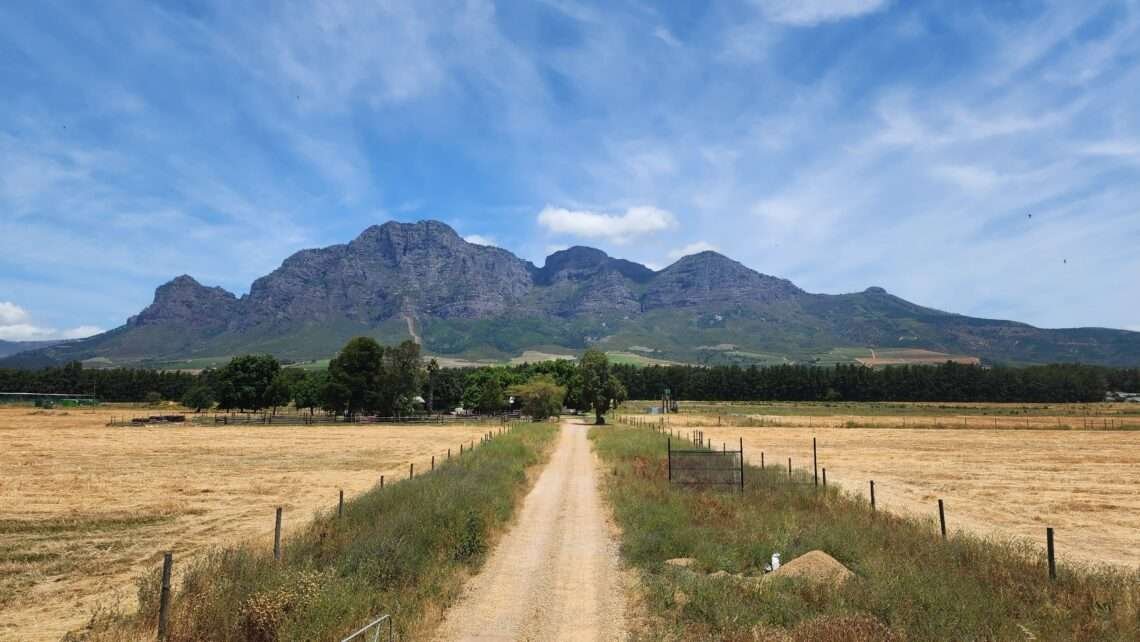
Wine Wonderland: Your Essential Guide to the Cape Winelands
The Cape Winelands, located approximately 40km east of Cape Town in the Western Cape Province, form a picturesque series of valleys nestled in the continuous belt of the stunning Cape Fold Mountains. The area is South Africa’s primary region for wine production, contributing to about 70% of the country’s total wine output.
While traditionally associated with Franschhoek, Stellenbosch, and Paarl, the Cape Winelands encompass numerous other wine routes across the Western Cape, including Tulbach, Worcester, Breedekloof, Robertson and Durbanville.
Take a look at the map below to see the different regions of the Cape Winelands.
General Information before you visit
A Taste of Local Wines
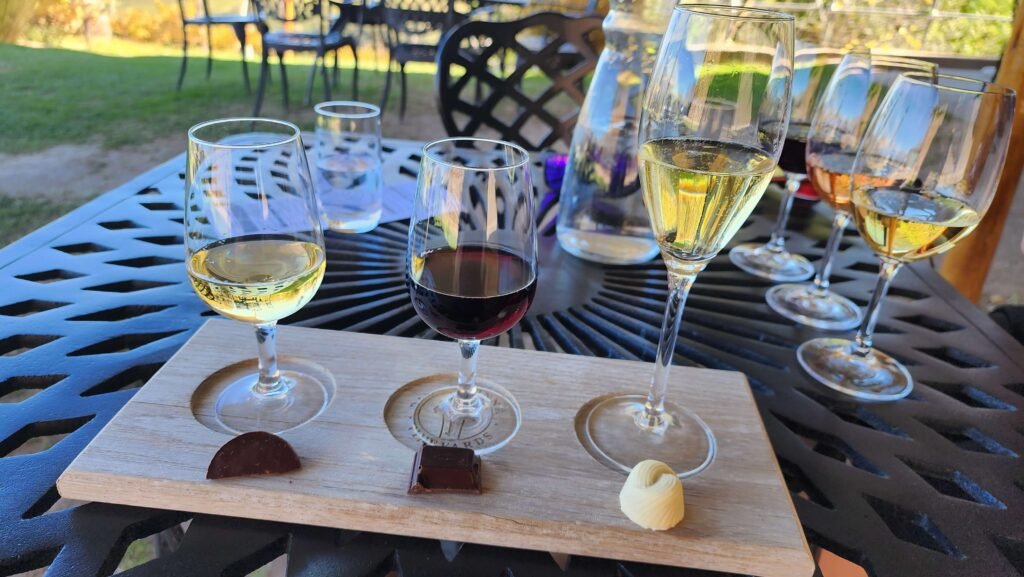
The Cape Winelands boast an ideal climate and fertile soil, perfect for growing grapes for winemaking. Red wine lovers can enjoy varieties like Cabernet Sauvignon, Syrah, Merlot, and Pinotage, while white wine options include Chardonnay, Chenin Blanc, and Sauvignon Blanc.
When To Visit The Cape Winelands
The best season to visit the Cape Winelands often depends on personal preferences. However, a favorite for visitors is usually is from late spring to early autumn, around September to April. This is when the weather is nice for outdoor activities and vineyard tours. If you’re interested in the grape-harvesting process and wine events, late summer to early autumn (February to April) is a great choice.
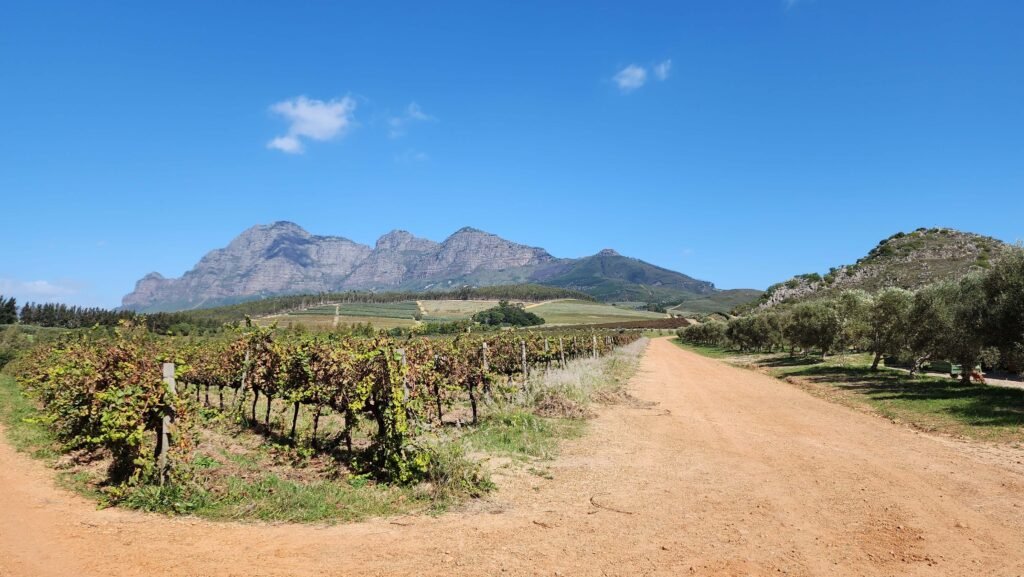
Winter brings heavy rains, strong north-westerly winds, and cool temperatures to the region, with averages ranging from 7°C (44°F) to around 16°C (61°F). Despite the colder weather, though, winter can be incredibly beautiful, too, especially with occasional snowfall on the surrounding mountains. Picture cozy dinners and a glass of wine by a warm fire.
The warm, blue skies and dry days with little wind in Summer attract many tourists. Despite the crowds, summer time in the Winelands is still my personal favorite. In summer, everything turns lush and green, and the busiest time for harvesting grapes is in February and March. The weather is generally nice, with temperatures ranging from 15°C (59°F) to 25°C (77°F). But watch out, it can get pretty hot! In places like Paarl, Stellenbosch, and Franschhoek, temperatures can soar into the 30s (98° – 102°F) or even the 40s (105°-107°F) on a summer day.
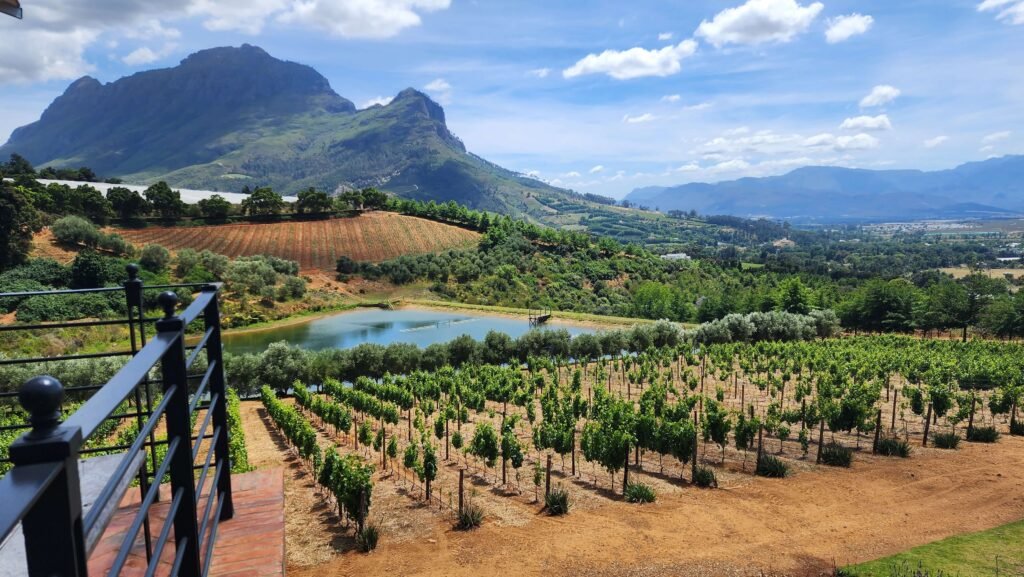
Popular wine tasting routes in the Cape Winelands
The Cape Winelands have fantastic wine routes, with numerous estates producing award-winning wines. A ‘wine route’ is a term used for an organized network of wineries that you can visit. These wineries are open to the public and include tastings and wine sales. Some focus on luxury, while others provide down-to-earth hospitality. I’ll be highlighting five popular routes in this blog: Constantia, Durbanville, Paarl, Stellenbosch, and Franschhoek.
1. Constantia Wine Route

The closest wine region to Cape Town’s center, just a 20 minute drive away, is Constantia. It is South Africa’s oldest wine region and boasts beautiful estates, from traditional homesteads to new boutique wineries. Of particular interest to the history buffs, the very first South African wine farm, Groot Constantia finds its spot in this region. Owing to the climate in the area, white wine production is more prevelant here, particularly Sauvignon Blanc and other dessert wines. It’s definitely worth a visit if you are pressed for time and don’t want to travel further out of Cape Town to the other estates in the Franschhoek or Stellenbosch area. Click here to discover how to explore the Constantia Wine Route and learn about some of my favorite estates.
How long should you spend at Constantia’s Wine Route?
Plan to spend at least a full day on the Constantia Wine Route to enjoy the wineries and surroundings. There are 10 wineries to choose from, though, so consider extending your visit to two or three days for a more relaxed experience.
2. Durbanville Wine Route

The Durbanville Wine Route is located in the Durbanville Valley, approximately 20-30 minutes’ drive from Cape Town’s city center. The region is known for its cool climate, which is suitable for growing a variety of grape cultivars. Common grape varieties in the Durbanville area include Sauvignon Blanc, Chardonnay, Merlot, and Shiraz. The route is home to several boutique wineries and vineyards, each known for producing high-quality wines. Some of the well-known estates along the Durbanville Wine Route include Durbanville Hills, Diemersdal, Nitida, and Meerendal. Hidden gems, such as Klein Roosboom, use old wine fermentation tanks for their tasting rooms, which is a fun and unique way to enjoy their wines. Don’t miss the MCC and macaroon pairing at Canto Wines, a delicious pairing at a beautiful estate.
How long should you spend at Durbanville’s Wine Route?
I suggest visiting no more than three wineries per day to truly enjoy the experience at each estate. With 11 estates to choose from, three days in the region should be sufficient.
3. Paarl Wine Route

Paarl is located approximately 40 minutes from Cape Town, making it easily accessible for day trips or longer visits. The town is situated in the Cape Winelands, surrounded by the Paarl Mountain and the Drakenstein Mountain Range. As one of the oldest wine-producing areas in the country, Paarl is known for its diverse terroir and excellent wines. The area is well-suited for the cultivation of a range of grape varietals, including Chenin Blanc, Shiraz, Cabernet Sauvignon, and Pinotage. One notable estate is Fairview, celebrated for its exceptional cheeses in addition to a diverse wine selection.
How long should you spend at the Paarl Wine Route?
With many beautiful estates to choose from, I suggest using Paarl as a base for a night or two to explore the region. Paarl is not just for wine lovers; it’s a great town for families too. If you’re with kids, Paarl is a great option, offering plenty of family-friendly attractions. These include places like Butterfly World, Alpaca Loom Coffee Shop and Weaving Studio, and the Spice Route.
4. Stellenbosch Wine Route
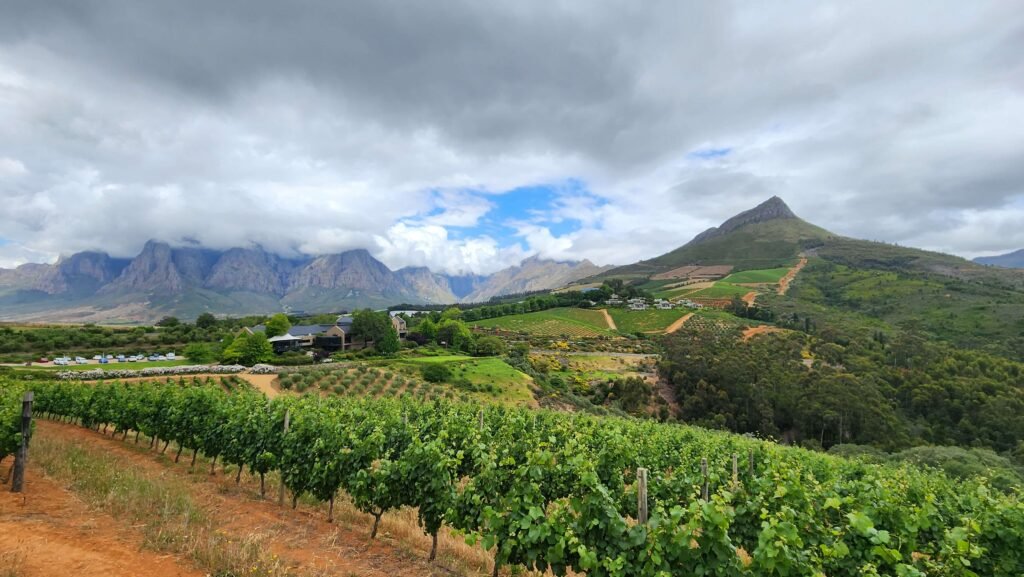
The Stellenbosch Wine Route is famous for its breathtaking landscapes and exceptional wineries. The region has a diverse range of soil types and microclimates, allowing for the cultivation of various grape varieties. Common varietals include Cabernet Sauvignon, Merlot, Shiraz, Chardonnay, and Sauvignon Blanc. Home to a variety of award-winning estates like Rustenberg, Delaire Graff, and Jordan Wine Estate, the region is a wine tasting extravaganza! Stellenbosch has a rich history, and some wine estates reflect this through their architecture and heritage. The town itself is known for its well-preserved Cape Dutch buildings and oak-lined streets.
More than just a wine destination, though, Stellenbosch is also a great place for a fun mix of activities. Some wine estates, such as Spier Wine Farm, can take up a whole day just by themselves. They offer Segway tours, grape juice tasting and walking tours that include tastings of tea, Cape sweets and beef snacks, all while learning interesting history tidbits of the area.
Picking a specific estate to visit in the Stellenbosch area can be quite challenging because each one offers something truly unique and impressive. Here’s my top tip: do some research in advance. Check if reservations are needed, explore the offerings, and consider the costs. Once you have the details, just go for it! I assure you that regardless of the estate you choose, you will love (and maybe leave you a bit happily wine-tipsy!). Some of my favorite Estates in the Stellenbosch region include Bartinney, Camberley, Tokara and Warwick.
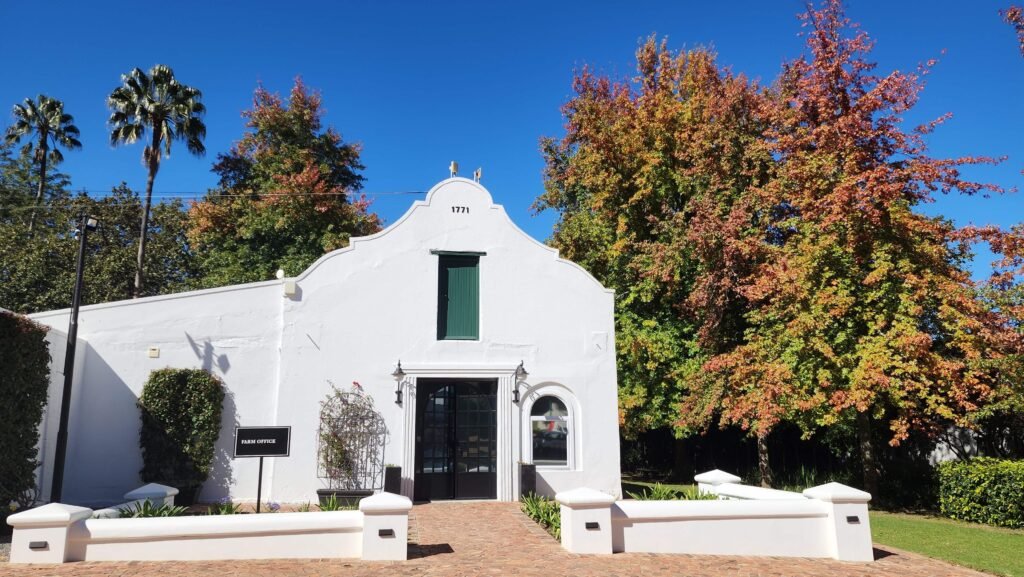
READ MORE >>> The best wine Estates in Stellenbosch.
How long should you spend at the Stellenbosch Wine Route?
I strongly suggest making Stellenbosch your home base for exploring the region. Consider staying for at least three full days, or even more if possible, as the area is quite expansive. To really savor the experience of the wineries, it’s worth taking your time. With so many appealing options to choose from, you wouldn’t want to rush it!
5. Franschhoek Wine Route
The town of Franschhoek has a rich history dating back to the late 17th century when French Huguenots, fleeing religious persecution in Europe, settled in the area. The influence of these French settlers is still evident in the town’s architecture, cuisine, and, of course, winemaking traditions. The region is renowned for its premium wines, and you can find a diverse range of grape varieties, including Shiraz, Cabernet Sauvignon, Chardonnay, and Sauvignon Blanc.
Hop-on Hop off Franschhoek Wine Tram
The Franschhoek Wine Tram is hands down one of the most fun and convenient way to explore the Franschhoek region of the Cape Winelands. With a hop-on, hop-off tram tour you can visit a number of wine estates while not having to worry about driving between estates or other transportation hassles. All in All, the Tram allows you a carefree adventure across the Winelands that is safe and fun! Learn how to get the most out of your Franschhoek Wine Tram experience here.

What wine estates should you visit in Franschhoek?
With so many great options, picking where to go can be tough. Each estate has its own special wines and beautiful scenery. La Motte, one of the oldest, not only produces excellent wines but also features an art museum and a renowned restaurant. Haute Cabrière is famous for its sparkling wines, and visitors can enjoy tastings while taking in the scenic views from its restaurant. Franschhoek Cellar, located in the heart of the valley, provides a diverse selection of wines along with an on-site restaurant. Boschendal, dating back to 1685, is not just an historic estate but also offers wine tastings, farm-to-table dining, and beautiful gardens. Dieu Donné Vineyards, situated on the slopes, has the most incredible views and setting! Rickety Bridge winery has some really things, too, from a panna cotta-wine pairing to a premium wine blending experience.
READ MORE: Best wine Estates in the Franschhoek Valley
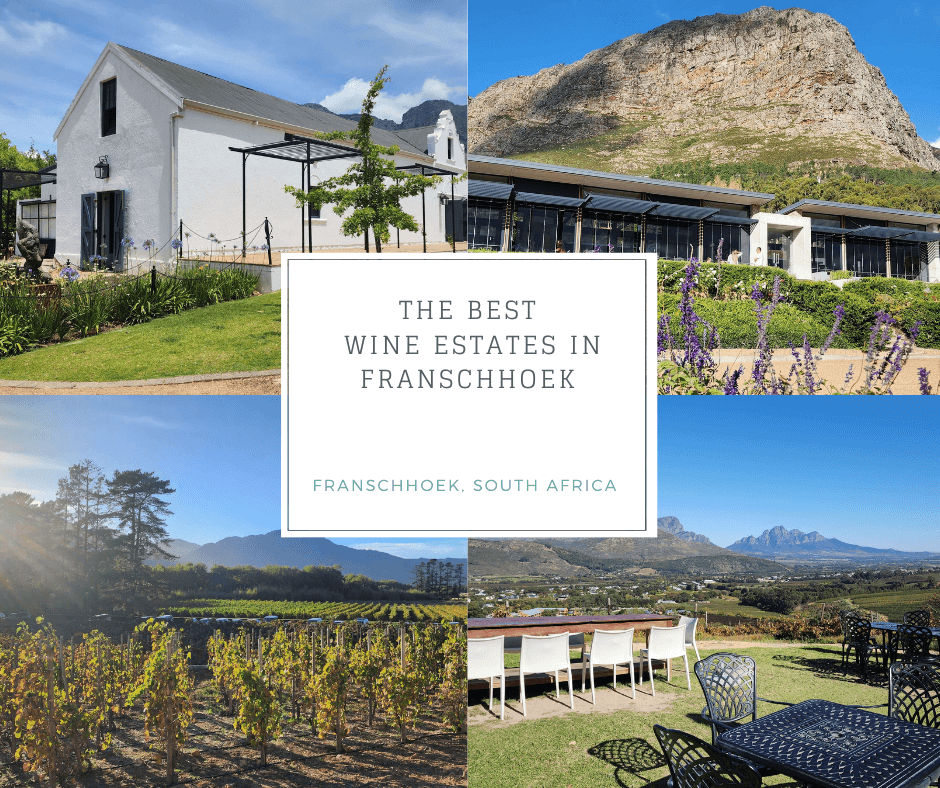
How long should you spend at the Franschhoek Wine Route?
My best advice (if time and budge allows): take it slow. We spent a whole day on the Navy line of the Franschhoek Tram and only made it to 3 estates. For a quick taste of the Franschhoek Wine Valley, a day trip is doable. You can visit a couple of wineries, have a nice meal, and enjoy the beautiful scenery. If you have a weekend, you’ll get a more relaxed experience with time to explore more wineries, restaurants, and attractions. For a thorough exploration and a chance to engage in additional activities like hiking or art gallery visits, consider staying for a few days or even a week.
Franschhoek Town
One road, aptly called ‘Main Road (or Huguenot Road), runs through the center of town from the Franschhoek Tram Terminal to the Huguenot Museum on Lambrechts Road. It is on this road that you will find many art galleries, restaurants, bars, cafes, a chocolate tasting room, a perfumery, museum and supermarkets. And here’s a quick fact about the town’s size – you can walk from one end to the other in just 20-25 minutes. That means you can see pretty much everything the town has to offer in a short stroll. This is great, especially if you’ve got only one day to explore! Click here to find out how to spend one day in Franschhoek.
Insider tips for wine tasting
- Reserve estate visits and wine tastings ahead of time to avoid disappointment. This is especially applicable for large groups.
- Travel Slowly. On some days, I was only able to visit two estates. Some of the estates are large and offer more than just wine tasting. It’s worth planning your day to savour each wine estate rather than trying to rush through and visit as many as possible.
- Do not drink and drive. Make sure someone in your group stays sober, use Uber, or join an organized wine tasting tour such as the Franschhoek Wine Tram.
- Pack sunscreen, hats, sunglasses. Outside of the summer season, you can still get sunburnt in the Cape Winelands.
- Visit during the day. The landscape, manicured lawns, sculpture gardens and views at most of the estates are spell-binding. It’s hard to enjoy these spectacles at night!
- Research the food. A lot of the estates offer world-class restaurants. If you love your food, the extra effort to search when and where you want to eat will pay off.
The combination of incredible scenery, high-quality and affordable wine, fun outdoor activities, as well as quaint and historical towns, make the Cape Winelands the perfect destination for any traveler. It’s an unforgettable experience you will cherish forever!
Looking for more things to do in the Cape Winelands?
Enjoy the scenery
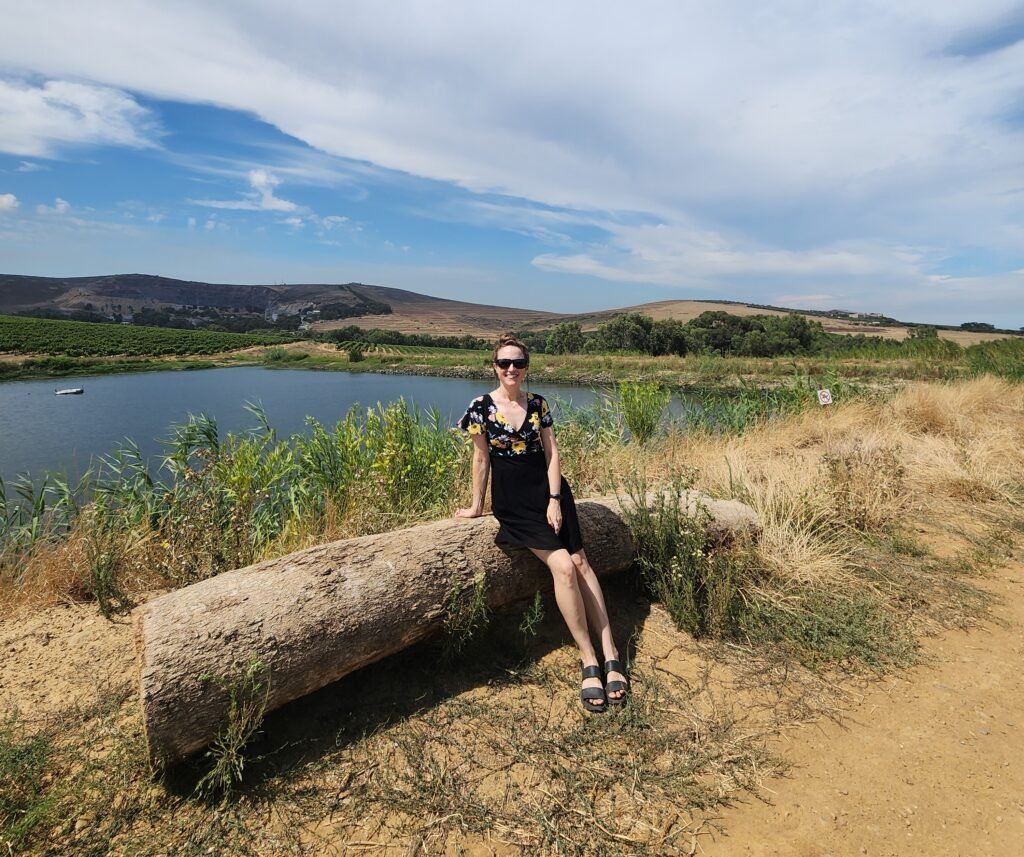
The scenery at the Cape Winelands is phenomenal. Some estates such as Klein Roosboom, Bartinney and Hidden Valley Wine have dedicated walking and mountain bike trails where you can get magnificent views of the valleys and mountains. Mont Rochelle Nature Reserve near Franschhoek is another great hiking destinations, with varying trail lengths and distances.
Explore the picturesque and historical towns of the Cape Winelands
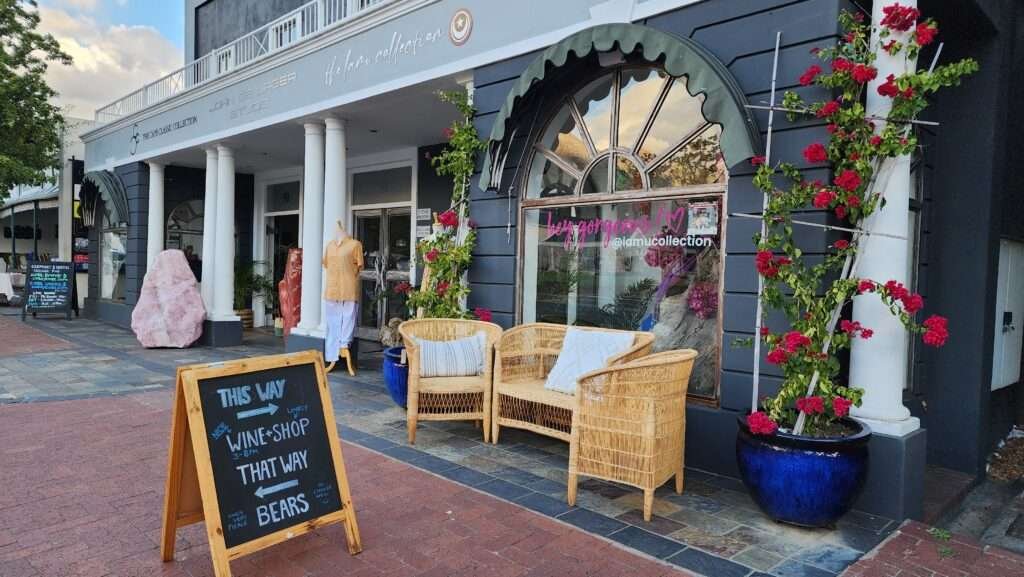
The area includes many lovel, small towns with fascinating histories, like Franschhoek, Gouda, Ceres, Paarl, Stellenbosch, and Robertson, among others. You can delve into South African history and the beginnings of the wineries by taking historical tours of museums and monuments.
Culinary Experiences
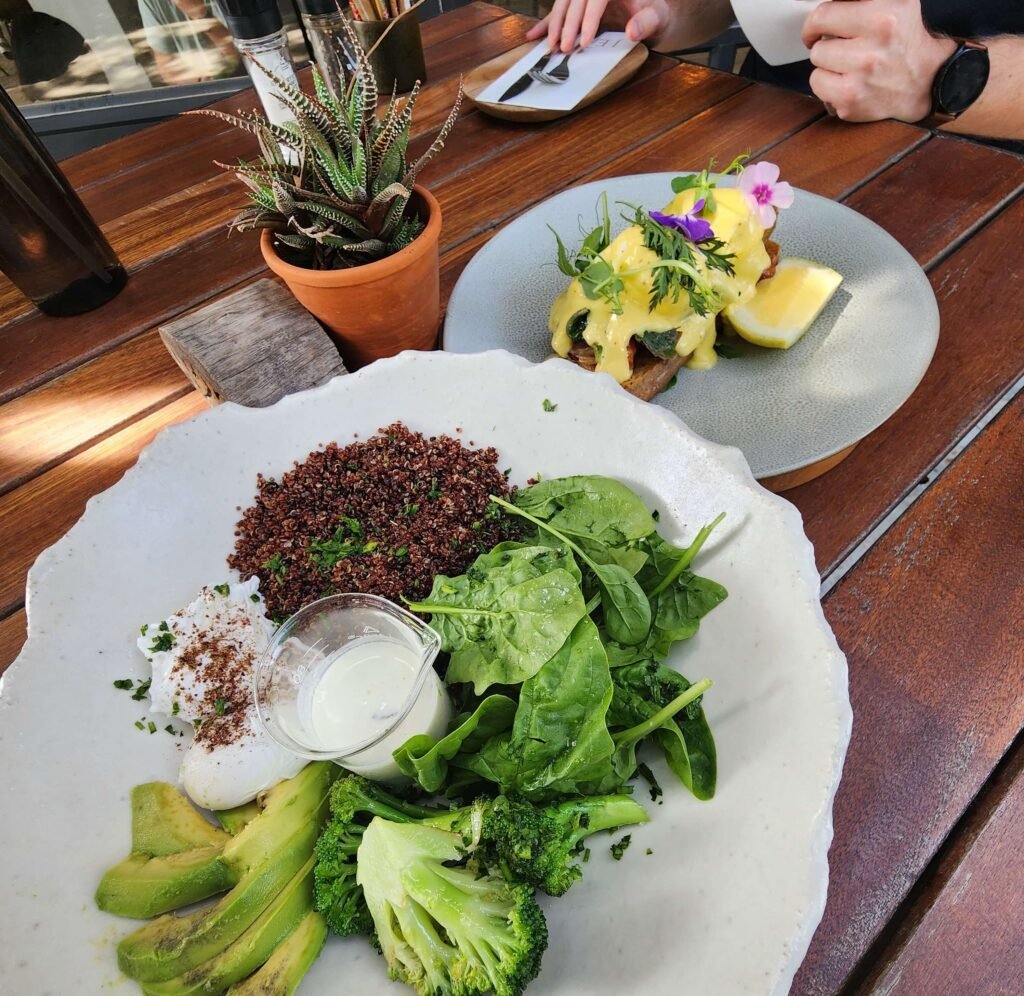
The Cape Winelands are famous for their amazing food. You can have excellent meals at popular restaurants or check out local markets and eateries. Franschhoek, in particular, is well-known for its great dining choices.
Click here for some more unique and interesting ideas.


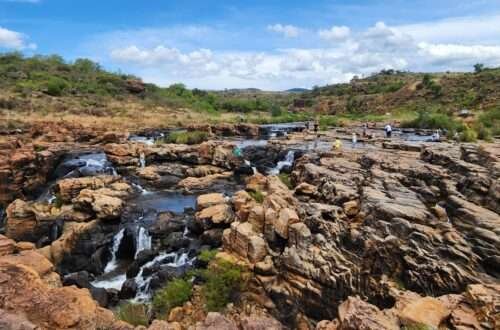
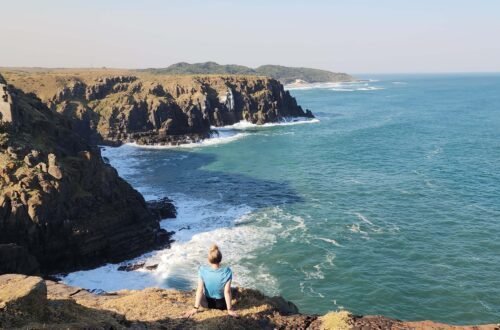
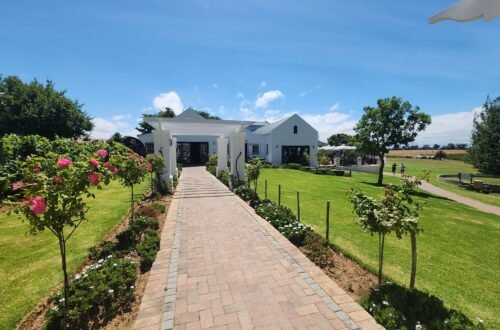
2 Comments
Pingback:
Pingback: